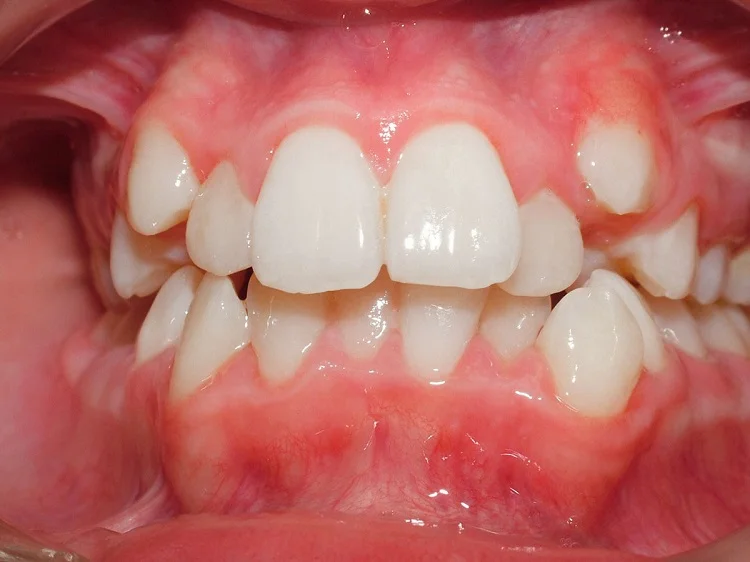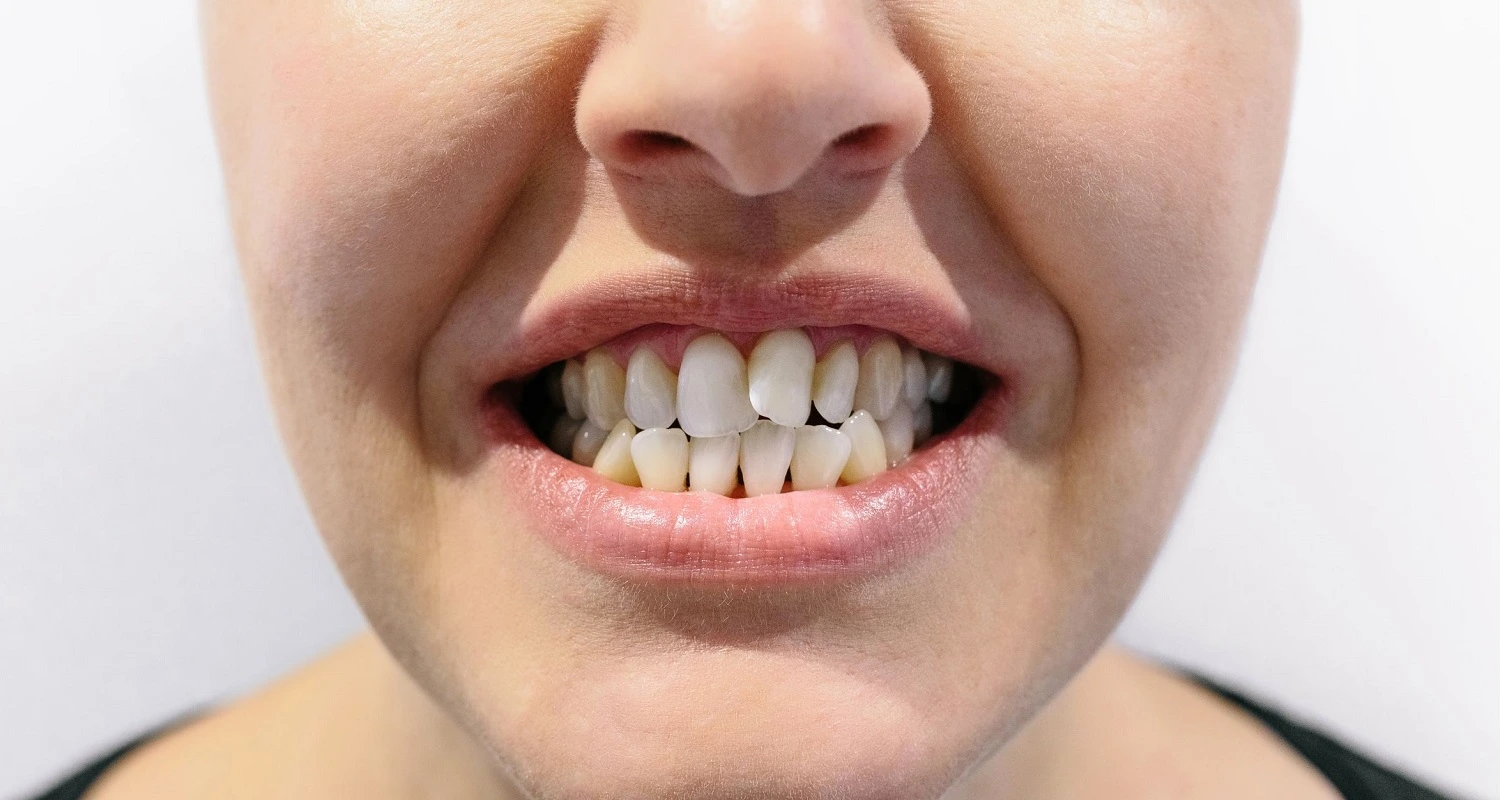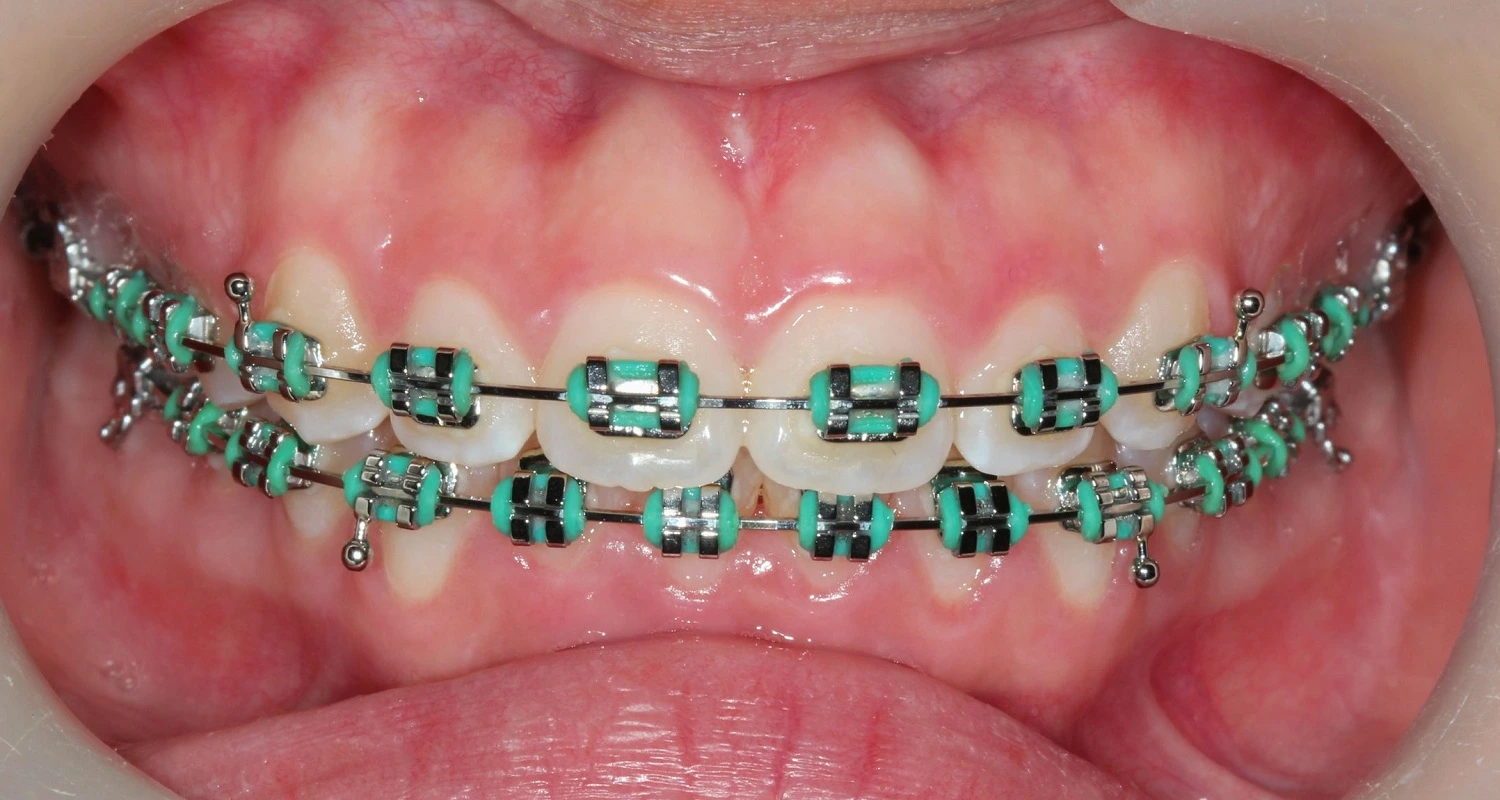Last Updated on: 2nd January 2026, 06:52 am
Dental crowding is one of the most common oral conditions. The teeth, mounted one on the other, especially in young people, will engender displeasure when the afflicted person smiles; it’s a serious aesthetic and functional problem.
This article will show what dental crowding is, what causes it, possible complications, if it can be prevented and treatment options.
What is Dental Crowding?
Crowding refers to a problem in the position and alignment of the teeth; that is, they are piled up, giving the impression that they do not fit in the mouth. For different reasons, there may not be enough space for the teeth to align in the proper position.
Crooked teeth in addition to overlapping each other can be rotated forward or backward with respect to the neighboring teeth. These positions determine the level of the severity of the crowding, which is then classified as mild, moderate, and severe.
What Causes it?
Crowding can be caused by several factors:
1. Habits
Thumb sucking or use of pacifiers and bottles for a long time, pushing the tongue against the teeth.
2. Loss of primary teeth
When the temporary teeth are lost prematurely, this poses a difficulty for the permanent ones since the spaces where these teeth go may have been reduced.
3. Very large teeth or very small maxilla and mandible bone
This is associated with hereditary factors. If one of the parents presents any of these characteristics, it is very likely that the child will also display dental crowding.
4. Wisdom teeth
When the third molars erupt and there is not enough space to house them, it is likely in some cases that other teeth will overlap one another. If you’re planning to have the wisdom tooth removed, you can check this article to learn more.
What are the Complications of not Treating Crowded Teeth?
1. Aesthetics
A smile displaying crowded teeth is less harmonious than one with straight and aligned teeth. In many cases, this aesthetic problem can cause low self-esteem, making those who present it avoid smiling and not show their teeth.
2. Tooth decay and gum disease
Having crowded teeth can make hygiene difficult; the brush and dental floss do not reach all surfaces of the teeth. Plaque or tartar can accumulate and dental caries may appear. It may also result in gum inflammation and bleeding, leading to gum diseases such as gingivitis or periodontitis.
3. Bite problems
During crowding, the upper teeth do not mesh with the lower ones, causing masticatory problems, wear between the teeth, and in more extreme cases, joint alteration.
Is it Possible to Prevent Dental Crowding?
In most cases, yes. This problem begins to be observed from the time the child begins the process of replacement, that is, when they lose the primary teeth and the permanent ones emerge. It is very important to schedule regular visits with a dentist or pediatric dentist to evaluate the growth of the child’s maxillary bones. The dentist will assess their habits, the position and size of the teeth, and start treatment at an early age to avoid future complications or more invasive treatments.
What is the Treatment for Dental Crowding?
Treatment will depend on age and the severity of crowding.
Some options are:
• Orthopedics: Appliances to correct the maxillary or mandible bones
• Orthodontics: Braces and/or aligners to correct the position of the teeth
• Tooth extractions: In some cases, extractions allow for opening space to locate the teeth properly.
The treatment will depend upon the age of the patient and the severity of the crowding. In each case, one or several combined treatments may be required.
To go deeper into this topic and learn about the different types of orthodontics and appliances to correct dental crowding, you can visit the “treatment” section of our website, where the information will be expanded.
Share:
References
1. Christine Frank, DDS. What Causes Crooked Teeth and How to Straighten Them. Healthline. Reviewed: May 8, 2019 (Consulted: January 17, 2023). Available in: https://www.healthline.com/health/dental-and-oral-health/crooked-teeth
2. Hend Salah Hafez, Sherif Mohamed Shaarawy, Ahmed Awadh Al-Sakiti, Yehya Ahmed Mostafa.Dental crowding as a caries risk factor: A systematic review. American Journal of Orthodontics and Dentofacial Orthopedics. Volume 142, Issue 4, 2012, Pages 443-450, ISSN 0889-5406. Available in: https://doi.org/10.1016/j.ajodo.2012.04.018
3. Kyle Kirkland. How Do I Know if My Teeth Crowding is Mild, Moderate, or Severe? WebMD. (Consulted: January 18, 2023). Available in: https://www.webmd.com/connect-to-care/teeth-straightening/how-to-tell-if-teeth-crowding-is-mild-moderate-or-severe
4. Melissa Sammy.4 Facts About Teeth Crowding You Should Know. WebMD. (Consulted January 18, 2023). Available in: https://www.webmd.com/connect-to-care/teeth-straightening/facts-about-teeth-crowding
5. Misaligned teeth and jaws: Overview. Institute for Quality and Efficiency in Health Care (IQWiG). January 16, 2020. Available in: https://www.ncbi.nlm.nih.gov/books/NBK553375/
-
Nayibe Cubillos M. [Author]
Pharmaceutical Chemestry |Pharmaceutical Process Management | Pharmaceutical Care | Pharmaceutical Services Audit | Pharmaceutical Services Process Consulting | Content Project Manager | SEO Knowledge | Content Writer | Leadership | Scrum Master
View all posts
A healthcare writer with a solid background in pharmaceutical chemistry and a thorough understanding of Colombian regulatory processes and comprehensive sector management, she has significant experience coordinating and leading multidisciplina...


















